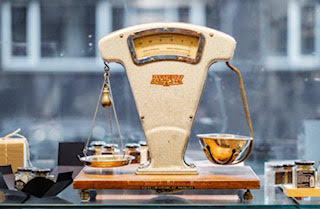More Americans, both adults and children, are overweight today than ever before. According to the Dietary Guidelines for Americans, nearly 74% of US adults are now considered overweight or obese and, therefore, at higher risk for diet-related diseases like heart disease and diabetes. Consuming large portions of ultra-processed foods likely plays a role. Ultra-processed foods are high in calories, added sugar and salt, and low in vitamins, minerals, and fiber. Examples include fast food, sodas, and candy.
Large portions of these foods are particularly problematic because they have more calories than small portions and encourage people to eat more. As a registered dietitian nutritionist who recognizes the importance of portion control for good health, I’ve been tracking portion-size trends for more than 20 years. My latest paper Portion Sizes of Ultra-Processed Foods in the United States, 2002 to 2021 coauthored with my NYU colleague, Dr. Marion Nestle, was recently published in the December issue of the American Journal of Public Health.
Portion sizes have jumped 5 times since introduced
Our research found that today’s portions sizes of ultra-processed foods (including fast food, sodas and chocolate bars) are up to 5-times-larger sizes than when first introduced. When first introduced, most companies offered products in just one size; that size is smaller than or equal to the smallest size currently available. For example, the original size of a Coca-Cola bottle was 6.5 ounces; today it comes in 6 sizes marketed as single servings; these range from 7.5 ounces to 24 ounces, 4 of which have been introduced since 2002.
Ginormous portions of ultra processed food—whether at a restaurant or giant-size packaging and servings at the grocery store–is partly to blame for the growing obesity epidemic in the United States.
While several food companies have slightly reduced the sizes of their portions since 2002, most still market larger sizes. Burger King, for example, sells a Triple Stacker King sandwich with more than three quarters of a pound of beef and nearly 1,400 calories.
As I wrote in my book Finally Full, Finally Slim, watching portion sizes is a great way to watch your weight without being deprived and going on a rigid diet. Practicing portion control enables you to eat all foods. Indulging in a small piece of chocolate cake, on occasion, won’t contribute to weight gain and disease. It’s the regular consumption of large portions, including sodas which hold a quart of sugar water and triple hamburgers with cheese and sauce that are troublesome.
To help you manage your portions, these simple portion hacks can help.
Four Simple Portion Hacks
Include more fruits and vegetables
As a registered dietitian nutritionist counseling clients on health and healthy weight loss, instead of focusing on which foods to take out of your diet, I like to advise them on adding more healthy foods. Most of us don’t eat enough fruits and vegetables. According to the CDC, about 90 percent of adults and kids don’t eat enough fruits and vegetables. The best way to eat less junk food is to eat more healthy foods. So, include a fruit or a veggie at each meal, and think about adding more color to your snacks as well. Focus on the vitamins and minerals you are getting. The fiber will help you feel full so it’s unlikely that you will overeat. If fresh produce isn’t always a viable option, frozen veggies, freeze dried fruit, and canned low-sodium vegetable soups work too.
Build fruit and vegetables into every meal and you’ll establish healthy eating habits for the entire family.
Sip smarter
Stay hydrated by drinking more water. Instead of drinking oversized sugary beverages like soda and sweetened iced tea, enjoy more water and sparkling water. It’s ok to add a splash of juice to your seltzer or to add mint, lemon, or sliced fruit to your water.
Want to enjoy an alcoholic beverage? Watch your portion and drink one drink with a meal. Even single-serve bottles and cans of beer have increased in size. In our study, while a can of beer once came in just a 12-oz size and the bottle in a 7-oz size, today single-serve beer cans now range in weight from 8 to 25 ounces while bottles range in weight from 7 to 40 ounces.
Purchase snacks in single servings
When we snack out of large bags of chips, we tend to eat more than if we were to eat a single-serving bag. Instead of mindlessly munching out of a big bag of your favorite snack food, open a small bag meant for one person. Another option, which is budget friendly and helps to prevents waste, is to divide a larger bag into single portions and you can grab one when the craving hits.
Cook at home
When we eat at home, we tend to eat healthier. We include less sugar and salt, fewer calories and more fiber, vitamins, and minerals. Not only do our portion sizes tend to be in check, but we incorporate more whole grains and fewer ultra-processed ingredients.
While we all have pandemic fatigue by now, one silver lining is eating more home cooked meals. Let’s continue this trend.
This post was originally published on Smart LifeBites.
Are you enjoying my newsletter? Please consider forwarding it to a friend or two.
Would you like help cultivating healthier habits? managing portions? eating mindfully?… and tips for eating a little better? I’m happy to help. I currently have 2 openings for VIRTUAL NUTRITION COACHING & COUNSELING. I can reached HERE to discuss your unique needs and set up a free 15-minute discovery call.⠀





 5 healthy breakfast tips
5 healthy breakfast tips